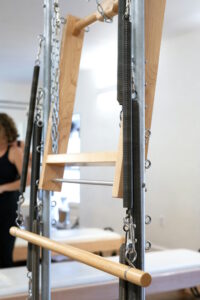
For those who have journeyed through the foundational stages of Pilates and have mastered the basics, advancing to more challenging and intricate workouts can be a rewarding experience. In this comprehensive guide, we will explore the realm of advanced Pilates workouts tailored for experienced practitioners. We’ll delve into the toughest Pilates routines, the different levels of Pilates, the essence of advanced Pilates, and the timeline for progression in this dynamic discipline.
What is considered the hardest Pilates workout?
Among the most challenging Pilates workouts, the “Advanced Reformer” routine is often considered one of the hardest. It requires mastery of both the Pilates Reformer apparatus and advanced Pilates principles. This intense workout focuses on building exceptional strength, flexibility, and control.
Key components of the Advanced Reformer workout include:
1. High Resistance: The springs on the Reformer are set to high resistance levels, demanding significant strength to execute movements.
2. Complex Movements: Advanced exercises involve intricate sequences and transitions that challenge coordination and precision.
3. Balance and Control: Exercises on the Reformer emphasize balance, control, and stability, often performed on an unstable moving carriage.
4. Full-Body Engagement: The workout targets every muscle group, requiring a high level of overall body strength.
While the Advanced Reformer is known for its difficulty, other challenging Pilates workouts include the Advanced Cadillac (Trapeze Table) and the Wunda Chair, each presenting its own set of demanding exercises.
What are the four levels of Pilates?
Pilates typically consists of four levels of proficiency, allowing individuals to progress gradually and safely:
1. Foundation Level (Level 1): This is where beginners start, focusing on learning the fundamental principles of Pilates, including core engagement, proper breathing, and basic movements. Exercises are low-impact and introduce individuals to the principles of control and precision.
2. Intermediate Level (Level 2): At this stage, individuals have gained proficiency in fundamental exercises and are ready to challenge themselves further. Intermediate Pilates introduces a wider variety of movements and exercises that build upon the foundations, requiring more strength and coordination.
3. Advanced Level (Level 3): Advanced Pilates is designed for individuals who have mastered the principles and exercises at the intermediate level. Here, participants engage in complex movements, transitions, and sequences that demand exceptional strength, flexibility, and control.
4. Master Level (Level 4): The master level is reserved for those who have achieved a high degree of expertise in Pilates. These practitioners can execute the most advanced exercises with precision, grace, and fluidity. Mastery in Pilates often takes years of dedicated practice.
What is advanced Pilates?
Advanced Pilates represents the pinnacle of proficiency in this discipline. It encompasses a wide range of complex exercises and movements that challenge the practitioner’s strength, flexibility, balance, and control. Advanced Pilates workouts are characterized by:
1. Complex Sequences: Advanced routines involve intricate sequences of movements, sometimes combining exercises from various Pilates apparatus.
2. High-Level Coordination: They demand a high level of coordination, requiring the practitioner to perform movements with precision and grace.
3. Use of Specialized Equipment: Advanced Pilates often incorporates specialized apparatus like the Reformer, Cadillac, and Wunda Chair to provide resistance and support for challenging exercises.
4. Focus on Mind-Body Connection: Practitioners at this level have a profound understanding of the mind-body connection and can use it to enhance their practice.
5. Full-Body Engagement: Advanced Pilates engages all muscle groups, including deep stabilizing muscles, to promote exceptional strength and endurance.
6. Incorporation of Flexibility Training: Advanced Pilates may include advanced stretching exercises to enhance flexibility and mobility.
How long does it take to advance in Pilates?
The time it takes to advance in Pilates can vary widely among individuals and depends on various factors, including your starting point, frequency of practice, and dedication. Here are some general guidelines:
1. Foundation Level (Level 1): Most beginners spend a few months (2-6 months) in the foundational stage, becoming comfortable with basic Pilates principles and movements.
2. Intermediate Level (Level 2): Progressing to the intermediate level can take anywhere from 6 months to a year. It involves gaining proficiency in a wider range of exercises and building strength.
3. Advanced Level (Level 3): Advancing to the advanced level may take 1-2 years of consistent practice, as it involves mastering complex movements and sequences.
4. Master Level (Level 4): Achieving mastery in Pilates can take several years, often a decade or more, of dedicated practice, continual learning, and refinement of skills.
It’s important to note that progress in Pilates is not solely measured by moving through levels. The emphasis should be on the quality of movement, precision, and control. Many experienced practitioners continue to find depth and refinement in their practice, even after years of dedicated training.
In summary, advanced Pilates workouts cater to experienced practitioners seeking to push their boundaries and refine their skills. The hardest Pilates routines often involve high resistance, complex movements, and an emphasis on balance and control. The four levels of Pilates—foundation, intermediate, advanced, and master—provide a structured framework for progression, with each level building upon the principles and skills of the previous one. The timeline for advancing in Pilates can vary widely, with the focus on continual improvement and mastery rather than rushing through the levels.